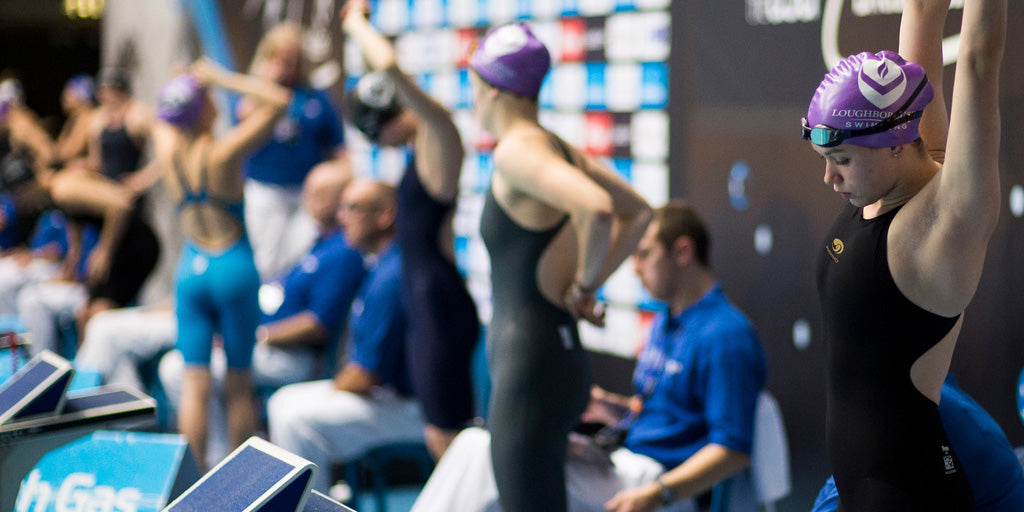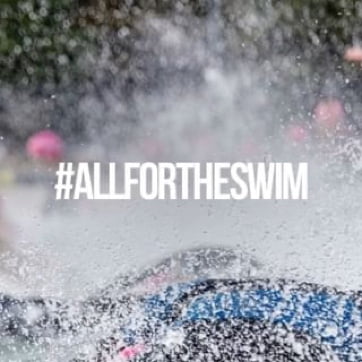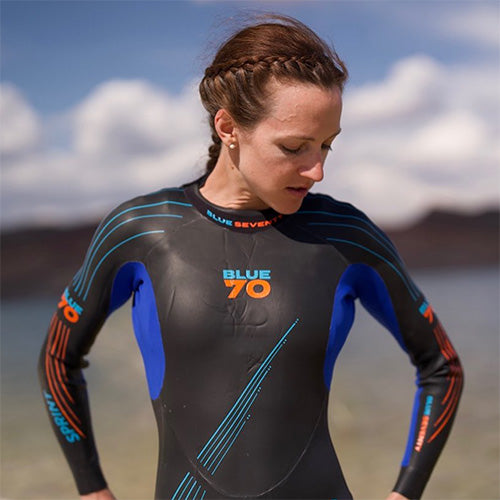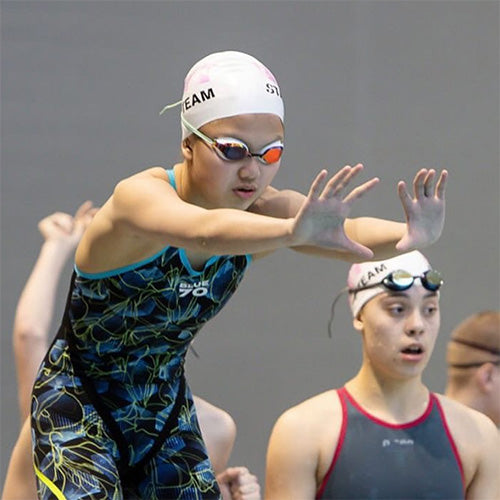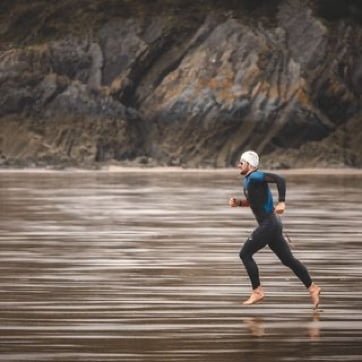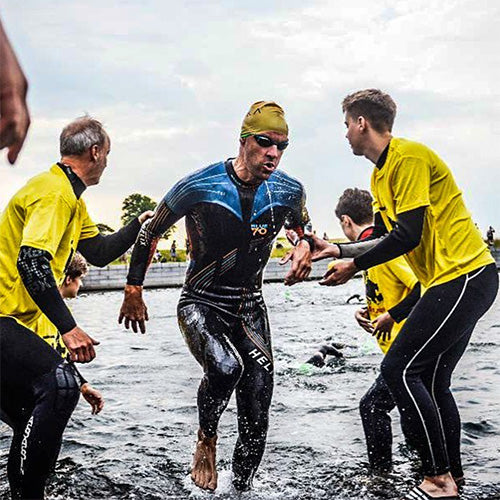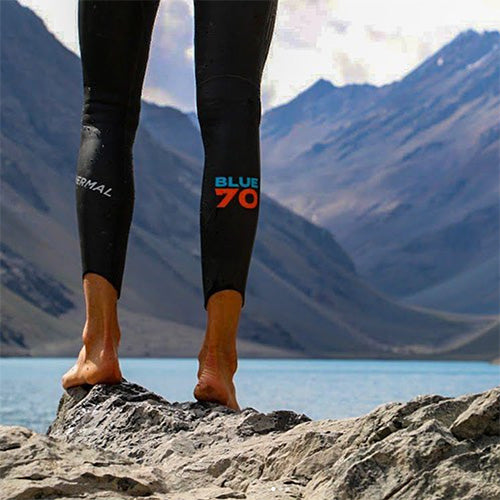Taper. It’s a sacred word for athletes across all sports. It’s a word that’s taken on a mystical quality in the swimming community especially over the course of the last decade, as if it’s heresy for a swimmer to go fast at a meet when they are not tapered.
But what actually is taper? It’s an interesting topic to discuss because there is not one formula that works for all athletes or sports, and thus welcomes a wide variety of experimentation and tinkering by the athlete and coach. One taper formula that works great for an athlete might make you feel like a rock in the water, which emphasizes the point of how individuals and the team around them need to work towards the best solution for their own body and mind.
A taper can be divided into two categories: physical and mental. Below we will dive into the physical side of tapering. We explore the mental aspect in the second part. Most of the examples below are swimming focused, but all of this can and should be applied to any sport and competition.

Physical Effects
The verb “to taper” is defined as the act of becoming smaller or thinner toward one end. For athletes, that “end” is the championship competition. During taper, an athlete will decrease their training volume and intensity in order to reduce the accumulated effects of fatigue caused by an extended period of hard training. The physiological changes in athletes that have occurred during research studies include increases in VO2 max, increases in anaerobic threshold, increases in muscular power in the water, and increased testosterone levels. It’s vital to remember that taper isn’t a simple checklist to complete during practice, and requires an athlete’s attention and focus in and out of training in the lead up to a big competition.
Regardless of the sport or endurance demands, a fact that everyone unanimously agrees on is that taper should be a time for increased specialization. Not every athlete’s taper should be the same, because we all have different strengths, weaknesses, and goals – depending on the time of year or fitness level. For example, one athlete might require a long warm up before the body is ready to do race-pace sets, whereas another athlete may only need a short splash before they are primed for race-pace efforts. The onus is on the athlete and their coach to experiment and figure out the system that works best for each individual.

When to Start
The first question is how far out from a competition should an athlete begin their taper, and how that timeline should change based on the endurance level of an athlete’s competition schedule. Past research suggests that it is more important for endurance athletes to maintain high intensity in their training in order to retain their gains in VO2 max following a period of hard training. Sprinters generally have greater muscle mass and spend a larger proportion of their time on dry-land training, and thus need more time for their muscles to completely recover following their final intense workouts. Endurance athletes have the difficult task of maintaining their aerobic fitness levels while still allowing their bodies to recover.
There is also the theory that as an athlete gets older, they need more time to physically taper. For instance, a typical taper for age-group swimmers will begin 1-1.5 weeks out from their big meet, whereas most college and professional groups start dropping their yardage 2-3 weeks out from their big meet. This is due to the decreased muscle mass of age group swimmers, higher intensity training blocks in college and professional groups, and that age group swimmers have faster physical recovery times due to their body’s still developing.

Types of Taper
The are two general types of taper called linear and step. Linear taper is by far the most commonly used in swim programs across the country, where yardage is gradually reduced by 10% per practice leading up to a competition. This means that if a typical tough practice for a group is 8,000 yards, the first day of taper will be roughly 7,200 yards, the second will be roughly 6,480 yards, etc. Research suggests that a total decrease of 60-80% of volume from a normal practice is the most effective linear taper. The best athletes will be relaxed and enjoying themselves in the warm up, but will switch to a laser-focus for those couple of minutes of dive starts or pace work.
The other less common form of taper is called a step taper, which is more popular with endurance athletes. A step taper has a steep drop off of yardage beginning only 4-5 days out from a competition. Up until this point an athlete will continue with their normal training schedule with lots of race-pace efforts and then immediately cut off over 50% of their normal volume and intensity. The goal for this type of taper is to allow an athlete to maintain their aerobic fitness levels for a race while still giving your muscles and mind a few days of recovery before a competition. Distance athletes tend to perform well under the step taper.
One of the most important aspects of the physical side of tapering is maintaining the “feel” for the water. Some athletes will actually continue doing light work in the weight room during their taper with the goal of keeping up their strength and pop in their stroke. In the water, it’s crucial for sprinters to increase their attention on fine tuning their events by working on starts, breakouts, turns, and finishes, and for distance athletes to work with their coaches on locking in their goal pace for their races.
The question you might be asking yourself is: How much does a proper taper actually help an athlete? Well, a systemic review and meta-analysis from a selection of 27 studies in competitive athletes found that the average improvement in performance was roughly 2%. That’s the difference in going a 19.6 in a 50-yard freestyle instead of a 20.0, which if you’re a sprinter, you know that that is a big deal. Combine that with shaving down, putting on a competition suit, and getting some adrenaline flowing, and the drops could keep coming.
Read the second part where we examine the mental side of tapering.
Written by Andrew Gyenis for blueseventy. A version of this was previously posted on the website Flo Swimming. Andrew is a former Stanford rower and U.S. junior national triathlete, who currently trains with Virginia's Machine Aquatics.


